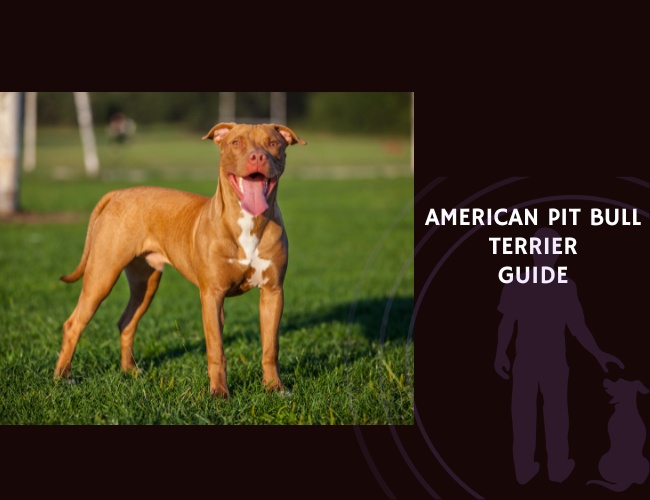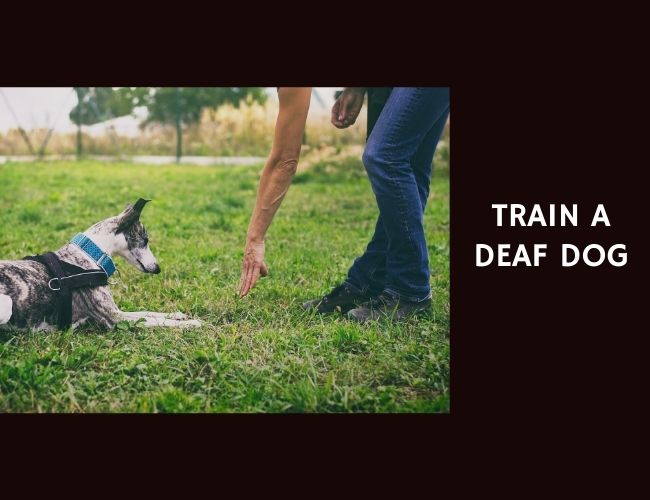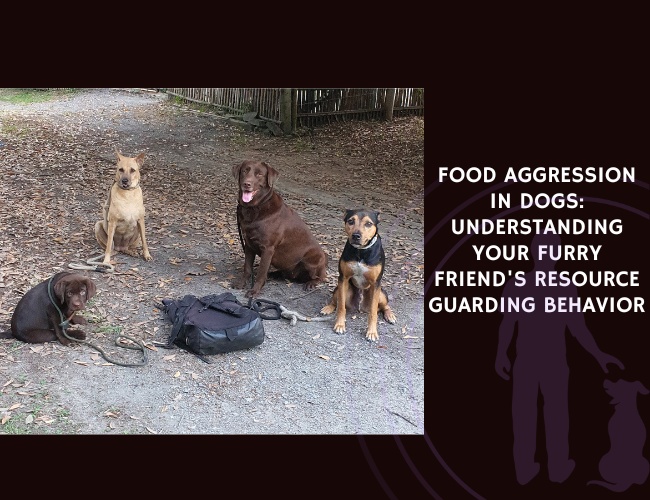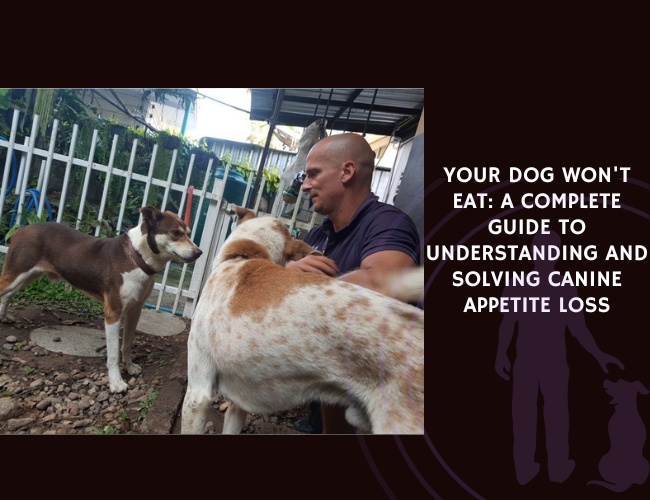In the tapestry of canine companionship, few breeds evoke such passionate discourse as the American Pit Bull Terrier. These muscular athletes with hearts of gold have journeyed from farm dogs to family guardians, carrying with them a complex legacy that deserves thoughtful exploration. Behind the headlines and misconceptions lies a breed of extraordinary emotional intelligence, unwavering loyalty, and remarkable resilience. Whether you’re drawn to their goofy grins, impressed by their athletic prowess, or moved by their capacity for forgiveness, understanding the true nature of the American Pit Bull Terrier reveals why dedicated owners often say, “Once you go Pit, you never quit.” Let us guide you through the fascinating depths of this misunderstood breed, helping you discover if your home might be the perfect place for one of these devoted companions. 🧡
Character & Behaviour
Understanding Your Pit Bull’s Emotional World
The American Pit Bull Terrier experiences emotions with an intensity that can surprise even seasoned dog owners. You might notice how your Pit Bull seems to absorb the emotional atmosphere of your home, becoming subdued when you’re sad or bouncing with extra enthusiasm when you’re celebrating. This isn’t your imagination – these dogs possess an extraordinary capacity for emotional attunement that borders on the empathic.
Deep bonds that last a lifetime. Unlike breeds that spread their affection broadly, Pit Bulls form selective, profound attachments to their chosen humans. This devotion manifests in countless ways: the full-body wiggle that greets you after any absence, the velcro-dog tendency to follow you from room to room, or the gentle way they’ll rest their blocky head on your lap when they sense you need comfort. Their loyalty isn’t just behavioral – it’s emotional, creating bonds that endure through life’s challenges.
Resilience in the face of adversity. Perhaps most remarkable is the American Pit Bull Terrier’s capacity for emotional recovery. Dogs who’ve experienced neglect, abuse, or trauma often display an almost miraculous ability to trust again when shown patience and kindness. This resilience doesn’t mean they forget – rather, they choose to forgive, teaching us profound lessons about the power of love over fear. You’ll find that building trust with a rescued Pit Bull becomes one of life’s most rewarding journeys.
Reading Between the Wiggles: Body Language & Communication
Your American Pit Bull Terrier communicates through a rich vocabulary of physical signals that, once understood, reveal the depth of their emotional expression. The famous “Pittie smile” – that relaxed, open-mouthed grin – genuinely mirrors human joy, often accompanied by soft, squinting eyes that radiate contentment. You’ll quickly learn to distinguish this from panting or stress signals through the overall body context.
The tail tells tales. That powerful tail serves as your Pit Bull’s emotional barometer, but it’s not just about the wag – it’s about the whole rear end! A happy Pit Bull often exhibits the “wiggle butt,” where the entire hindquarters join the celebration. Low, slow wags might indicate uncertainty, while that helicopter-spinning tail accompanied by play bows signals pure, unleashed joy. Many owners joke about their Pit Bull’s tail being a weapon of mass destruction, clearing coffee tables in single sweeps of enthusiasm.
Vocalizations that speak volumes. While not typically excessive barkers, Pit Bulls develop unique vocal repertoires for their families. You might hear conversational grumbles during belly rubs, excited whines that sound almost like talking when they’re trying to tell you something important, or that distinctive “woo-woo” sound many make when they’re especially happy. Some even learn to “purr” – a rumbling contentment sound made while receiving affection. These vocalizations, combined with those expressive eyebrows and mobile ears, create a communication system as clear as any spoken language.
Navigating Social Dynamics with Other Dogs
Here we must address the elephant in the room with honesty and compassion: many American Pit Bull Terriers display varying degrees of dog selectivity or same-sex aggression. This isn’t a character flaw or training failure – it’s a genetic predisposition that requires understanding and management. Acknowledging this reality allows you to set your dog up for success rather than putting them in situations where their genetics work against them.
The spectrum of sociability. Dog selectivity in Pit Bulls exists on a spectrum. Some individuals adore all dogs throughout their lives, while others become increasingly selective as they mature, typically between 1-3 years of age. You might have a Pit Bull who plays beautifully with their carefully selected friends but needs careful introduction protocols with new dogs. This selectivity often manifests more strongly with same-sex pairs, particularly intact animals, though spaying/neutering doesn’t eliminate the tendency entirely.
Managing multi-dog dynamics. In multi-dog households, success depends on understanding individual dynamics and respecting boundaries. Many Pit Bulls coexist peacefully with opposite-sex housemates or dogs they’ve known since puppyhood. However, you’ll need to remain vigilant about resource guarding, arousal levels during play, and signs of tension. Separate feeding, individual training sessions, and supervised interactions become routine parts of responsible ownership. The key lies not in forcing friendships but in managing relationships intelligently.
Temperament Truths: Stability Under Pressure
The well-bred American Pit Bull Terrier displays remarkable temperamental stability, possessing what behaviorists call a “high bite threshold” – meaning they require significant provocation before showing defensive behaviors. You’ll observe this as a calm confidence in new situations, a steady demeanor when faced with surprises, and an impressive ability to recover from startling events. This stability made them valuable as frontier farm dogs and continues to serve them well as therapy and service animals.
Confidence without aggression. True Pit Bull temperament manifests as quiet confidence rather than reactivity. Your dog might watch new situations with interest but rarely with fear or immediate aggression. They assess before reacting, displaying the kind of measured response that comes from generations of breeding for stability. This confidence means they rarely start conflicts but also means they won’t back down if challenged – making prevention and management crucial owner responsibilities.
Intensity and determination defined. What some mistake for aggression is often the breed’s characteristic intensity and determination. When a Pit Bull commits to something – whether it’s playing tug, learning a new trick, or yes, unfortunately, engaging in a conflict – they do so with their entire being. This “never quit” attitude served them well in their working past but requires channeling into appropriate outlets today. You’ll find this intensity makes them exceptional athletes, dedicated workers, and enthusiastic partners in any activity you choose together.
Training & Education
Unlocking the Eager Mind: How Pit Bulls Learn Best
Your American Pit Bull Terrier comes equipped with an intelligent, eager-to-please mind that thrives on positive reinforcement training. These dogs want nothing more than to make you happy, and when you tap into this motivation, training becomes a joyful partnership rather than a chore. You’ll discover that your Pit Bull learns best through active participation – they’re kinesthetic learners who need to “do” rather than just observe.
Motivation matters most. While many Pit Bulls respond enthusiastically to food rewards, you might find yours values play or praise even more highly. That tug toy might unlock training potential that treats never could! The key lies in discovering what makes your individual dog’s eyes light up with excitement. Some work for tennis balls, others for squeaky toys, and many for nothing more than your enthusiastic “Good dog!” delivered with genuine joy.
Keeping it fresh and engaging. These intelligent dogs bore easily with repetitive drilling. You’ll maintain their enthusiasm by varying your training sessions, introducing new challenges regularly, and keeping sessions short but frequent. Think of training as a conversation rather than a lecture – your Pit Bull has opinions and ideas too! When they offer behaviors spontaneously, reward the creativity even as you shape it toward your goals.
The Critical Window: Early Socialization Strategies
The importance of early socialization for your American Pit Bull Terrier cannot be overstated. Between 3-14 weeks of age, your puppy’s brain is particularly receptive to new experiences, forming neural pathways that will influence their responses throughout life. This window doesn’t close abruptly, but it does narrow, making these early weeks precious opportunities for shaping a confident, well-adjusted adult dog.
Quality over quantity in experiences. Proper socialization isn’t about overwhelming your puppy with stimuli – it’s about creating positive associations with diverse experiences. You’ll want to introduce your Pit Bull puppy to people of all ages, ethnicities, and mobility levels, ensuring each interaction remains positive. Children require special attention, teaching both puppy and child appropriate interaction styles. Remember, one negative experience can outweigh ten positive ones, so proceed thoughtfully rather than rushing.
Navigating dog-to-dog socialization. Given the breed’s potential for dog selectivity, puppy socialization with other dogs requires particular care. Choose playmates wisely – calm, socially skilled adult dogs teach better lessons than chaotic puppy free-for-alls. You’re aiming to teach your Pit Bull that other dogs are neutral or positive, not that every dog equals playtime. This measured approach helps prevent over-arousal and inappropriate play styles that can develop into problems later.
Beyond Basic Obedience: Essential Life Skills
Training your American Pit Bull Terrier extends far beyond sit, stay, and come. These powerful dogs require specific skills that acknowledge both their strength and their breed traits. You’ll find that investing time in these foundational behaviors during puppyhood pays dividends throughout your dog’s life.
Leash manners as a non-negotiable. An adult Pit Bull pulling on leash isn’t just annoying – it’s potentially dangerous for both of you. Start loose-leash walking from day one, using positive reinforcement to reward the position you want rather than correcting pulling. Many Pit Bulls respond beautifully to “be a tree” methods where forward movement stops the instant the leash tightens. Your consistency in this will determine whether walks become enjoyable adventures or shoulder-dislocating ordeals.
Impulse control: The foundation of safety. Teaching your Pit Bull to think before acting might be the most valuable gift you give them. Games like “it’s your choice,” where dogs learn that calm behavior earns rewards, build crucial impulse control. You’ll practice this around food, toys, doorways, and especially around other dogs. A Pit Bull who can see another dog and choose to look at you instead has learned a literally life-saving skill.

Cooperative Care: Building Trust Through Handling
Your American Pit Bull Terrier’s strength makes cooperative care training essential rather than optional. Starting from puppyhood, you’ll want to teach your dog to actively participate in their own care rather than merely tolerate handling. This approach builds trust while making veterinary visits, grooming, and health checks stress-free for everyone involved.
Making medical care a positive experience. Begin with brief, rewarding handling sessions. Touch paws and immediately offer a treat. Look in ears while praising calmly. Open that mouth gently while your puppy learns this predicts good things. You’re creating positive associations that will last a lifetime. Many Pit Bulls learn to offer paws for nail trims or hold still for ear cleaning when these activities become cooperative rather than coercive.
The power of choice in handling. Advanced cooperative care involves teaching your Pit Bull to consent to handling. They might learn to rest their chin on your hand to indicate they’re ready for eye drops, or to stand on a mat for grooming. This sense of control reduces anxiety and builds confidence. You’ll find that a dog who chooses to participate rarely needs restraint, making everyone’s job easier and safer.
Nutritional Recommendations
Fueling the Athlete: Caloric Needs and Muscle Maintenance
Your American Pit Bull Terrier’s muscular physique requires thoughtful nutritional support to maintain optimal condition. These athletic dogs typically need between 900-1,800 calories daily, with significant variation based on activity level, age, and individual metabolism. You’ll need to become skilled at assessing body condition, as Pit Bulls should maintain visible waist definition from above and a slight abdominal tuck from the side.
Protein powers performance. Quality protein should comprise 25-30% of your Pit Bull’s diet to support their impressive muscle mass. Look for named meat sources as primary ingredients – chicken, beef, salmon, or lamb rather than generic “meat meal.” You might notice your athletic dog thrives on slightly higher protein levels than less muscular breeds, particularly if they’re involved in sports or regular intense exercise.
Feeding frequency matters. Rather than one large meal, most Pit Bulls benefit from 2-3 smaller meals throughout the day. This approach maintains stable energy levels, reduces bloat risk, and can help prevent resource guarding behaviors. You’ll find that consistent feeding times also help with house training and general routine establishment. Many owners use portion of daily calories for training treats, ensuring weight maintenance while maximizing training opportunities.
Supporting joints and recovery through nutrition
The American Pit Bull Terrier’s athletic lifestyle demands nutritional support for joint health and muscle recovery. Whether your dog is a weekend warrior or a competitive athlete, their diet plays a crucial role in maintaining long-term mobility and comfort. You’ll want to think proactively about joint support rather than waiting for problems to develop.
Building blocks for healthy joints. Glucosamine and chondroitin, whether through supplements or fortified foods, help maintain the cartilage cushioning your dog’s hard-working joints. Many quality foods now include these compounds, along with green-lipped mussel or MSM for additional support. Omega-3 fatty acids from fish oil provide anti-inflammatory benefits that support both joint health and muscle recovery after exercise.
Post-exercise nutrition strategies. If your Pit Bull participates in intense activities like weight pull, agility, or extended hikes, consider their post-exercise nutrition. A small amount of easily digestible protein and carbohydrates within an hour after intense exercise aids recovery. Some owners prepare “recovery balls” with peanut butter, oats, and protein powder for convenient post-workout snacks.
Navigating food sensitivities and allergies
Many American Pit Bull Terriers experience food sensitivities that manifest as skin issues, chronic ear infections, or digestive upset. You might notice your dog constantly licking their paws, developing hot spots, or experiencing recurring ear problems despite good hygiene. These symptoms often trace back to dietary triggers that require identification and elimination.
Common culprits and solutions. Chicken, beef, corn, wheat, and soy top the list of common allergens for Pit Bulls. If you suspect food sensitivities, an elimination diet becomes your diagnostic tool. You’ll start with a novel protein source your dog hasn’t eaten before – perhaps venison, duck, or kangaroo – paired with a simple carbohydrate like sweet potato. After 8-12 weeks, you can slowly reintroduce potential triggers one at a time, watching for reactions.
Supporting gut health naturally. The connection between gut health and skin conditions in Pit Bulls is well-established. Probiotics and prebiotics can help establish healthy gut flora, potentially reducing sensitivity reactions. Fermented vegetables, kefir, or quality probiotic supplements support this internal balance. You might find that addressing gut health improves not only skin conditions but overall vitality and immune function.
Enrichment feeding: Engaging the mind through meals
Your intelligent Pit Bull benefits tremendously from working for their food rather than simply eating from a bowl. This mental stimulation helps prevent boredom-related behaviors while slowing down those enthusiastic eaters who inhale their food. You’ll discover that mealtime can become training time, enrichment time, and bonding time all at once.
Puzzle feeders and food toys. Start simple with a Kong stuffed with kibble and sealed with peanut butter, then graduate to more complex puzzle feeders as your dog masters each challenge. Snuffle mats tap into natural foraging instincts, while treat-dispensing balls add physical activity to mealtime. Many Pit Bulls show remarkable problem-solving abilities when motivated by food, turning mealtime into an engaging mental workout.
Training as a feeding method. Consider using your dog’s daily calories as training rewards throughout the day. This approach maximizes training opportunities while preventing overfeeding. You might practice basic obedience during morning feeding, work on tricks during lunch, and use dinner for calm settling exercises. This strategy particularly benefits high-energy Pit Bulls who need mental stimulation as much as physical exercise.
Powerful. Perceptive. Profound.
Your Pit Bull feels before they acts.
This isn’t just a dog with strength — it’s a dog with soul. Behind the muscles lies a heart that reads you better than most humans ever will. Emotional connection isn’t optional for them — it’s the foundation.
Their intensity is not aggression.
They commit — fully, fiercely, fearlessly — whether it’s to play, protection, or pleasing you. Channel that intensity, and you’ll have a partner who won’t just work with you, but for you.
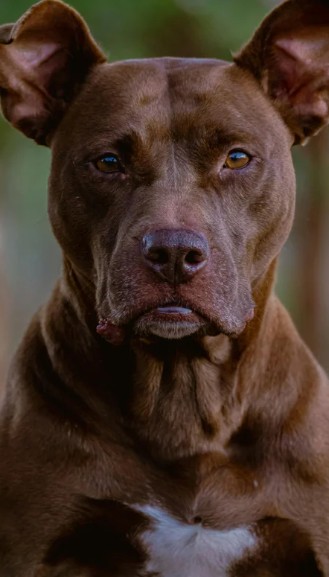
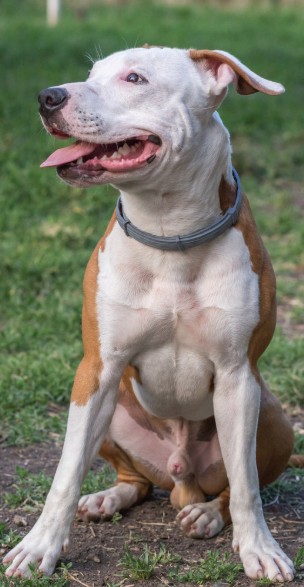
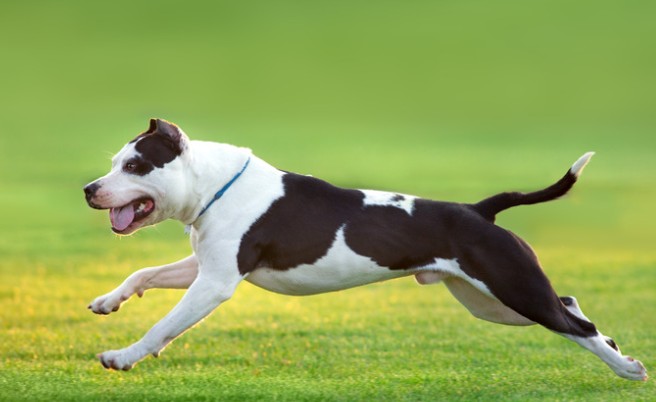
Social nuance is survival.
Pit Bulls aren’t for everyone. They demand honesty, clarity, and leadership rooted in fairness. But earn their trust, and they’ll move through fire for you — not because you told them to, but because they chose to.
Diseases & Susceptibilities
Understanding genetic health predispositions
Knowledge of breed-specific health concerns empowers you to make informed decisions about your American Pit Bull Terrier’s care. While generally healthy and robust, the breed faces several genetic challenges that responsible breeders work to minimize through health testing and selective breeding. Understanding these potential issues helps you recognize early warning signs and seek appropriate preventive care.
Hip and elbow dysplasia concerns. Like many medium to large breeds, Pit Bulls can develop hip and elbow dysplasia – malformation of these joints that leads to arthritis and mobility issues. You’ll want to maintain your dog at an ideal weight to minimize joint stress and consider OFA (Orthopedic Foundation for Animals) screening if breeding. Early signs might include bunny-hopping gait, difficulty rising, or reluctance to jump. Catching these issues early allows for management strategies that maintain quality of life.
Eye and heart health monitoring. Progressive Retinal Atrophy (PRA) and other eye conditions occur in some Pit Bull lines, making annual eye examinations valuable for early detection. Congenital heart conditions, particularly aortic stenosis, also appear in the breed. You might never know your dog has a mild heart murmur without veterinary auscultation, emphasizing the importance of regular check-ups. Early detection of these conditions allows for monitoring and management that can extend healthy years.
The skin struggle: Managing allergies and sensitivities
If your American Pit Bull Terrier develops skin issues, you’re far from alone – this represents the breed’s most common health challenge. Environmental allergies (atopy) typically emerge between 1-3 years of age, turning your dog into an itchy, uncomfortable mess during certain seasons or year-round. You’ll become intimately familiar with hot spots, secondary infections, and the constant cycle of scratching and licking.
Recognizing allergy patterns. Environmental allergies often follow seasonal patterns initially, worsening during high pollen times. You might notice your Pit Bull licking their paws obsessively, developing red, irritated skin between their toes. Ear infections recurring despite treatment often signal underlying allergies. Some dogs develop hives or facial swelling from acute reactions, requiring immediate veterinary attention.
Multi-modal management approaches. Managing allergic Pit Bulls typically requires combining strategies. Regular bathing with medicated shampoos removes allergens from the coat. Omega-3 supplementation reduces inflammatory responses. Some dogs benefit from immunotherapy (allergy shots) tailored to their specific triggers. You’ll work closely with your veterinarian to find the right combination of treatments, potentially including apoquel, cytopoint, or other medications during flare-ups.
Orthopedic challenges in athletic dogs
The American Pit Bull Terrier’s athletic nature and enthusiastic approach to life can predispose them to certain orthopedic injuries. Their “give it their all” attitude means they might not show pain until injuries become severe, requiring vigilant observation from you. Understanding common orthopedic issues helps you make informed decisions about activity levels and preventive care.
Cranial cruciate ligament concerns. The dog equivalent of an ACL tear, cranial cruciate ligament rupture occurs with some frequency in active Pit Bulls. You might notice sudden lameness after play, reluctance to bear weight, or swelling around the knee. Unlike human athletes who typically experience acute trauma, dogs often suffer degenerative changes leading to rupture. Maintaining ideal weight and avoiding repetitive high-impact activities on slippery surfaces reduces risk.
Managing the athletic lifestyle. Your Pit Bull’s enthusiasm might exceed their physical limitations, requiring you to serve as the voice of reason. Warm-up periods before intense activity, cool-down walks afterward, and rest days between high-impact sessions help prevent overuse injuries. Consider varying activities – swimming provides excellent exercise without joint stress, while nose work engages the mind without physical strain.
Neurological conditions: From tremors to seizures
Some American Pit Bull Terriers experience neurological conditions ranging from benign to serious. Understanding these possibilities helps you respond appropriately if symptoms appear, avoiding panic while ensuring necessary care. Early recognition and proper management often allow affected dogs to live normal, happy lives.
The mystery of head tremors. “Pit Bull Head Tremors” describe episodic head bobbing that appears alarming but typically doesn’t affect the dog’s awareness or cause distress. You might see vertical or horizontal head movements lasting seconds to minutes. These episodes often respond to distraction – calling your dog or offering a treat frequently stops the tremoring. While the cause remains unknown, most affected dogs require no treatment beyond reassurance.
Epilepsy management realities. Idiopathic epilepsy affects some Pit Bull lines, typically appearing between 6 months and 5 years of age. You’ll need to document seizure frequency, duration, and recovery times for veterinary assessment. Many epileptic dogs achieve good control with medication, though finding the right protocol might require patience. Lifestyle modifications like stress reduction and consistent routines support medical management.
Parasitic vulnerabilities and prevention
Your American Pit Bull Terrier’s short coat and skin sensitivities create particular vulnerabilities to external parasites. Their minimal coat offers little barrier against fleas, ticks, and mites, while their tendency toward skin issues can complicate parasitic infections. Year-round prevention becomes essential rather than seasonal in most climates.
Demodectic mange susceptibility. Pit Bulls show higher rates of demodectic mange than many breeds, suggesting an inherited immune component. You might notice patchy hair loss, particularly around the face and feet, or generalized thinning if the condition spreads. While localized cases in puppies often resolve spontaneously, generalized demodex requires aggressive treatment and suggests underlying immune compromise.
Comprehensive parasite prevention. Modern preventives offer broad-spectrum protection against fleas, ticks, and various mites. You’ll want to choose products carefully, as some Pit Bulls show sensitivities to certain topical treatments. Regular environmental management – washing bedding, vacuuming frequently, and treating yards if necessary – supports medical prevention. Remember that prevention costs far less than treating established infestations.
Attitude & Lifestyle
City dogs with country hearts: Urban adaptability
Your American Pit Bull Terrier might surprise you with their adaptability to urban living. Despite their athletic build and energetic nature, these dogs often thrive in city environments when their physical and mental needs are met. The constant stimulation of city life – new smells, sounds, and sights – provides natural enrichment that keeps intelligent Pit Bulls engaged and satisfied.
Making apartments work. Success in apartment living depends less on square footage than on exercise commitment. Your Pit Bull won’t care about living in 500 square feet if they’re getting their needs met through daily adventures. Many urban Pit Bulls develop into perfect apartment dogs – quiet, calm indoors, and content to snuggle on the couch between activities. The key lies in establishing routines that burn energy before expecting calm behavior at home.
Navigating breed restrictions. Unfortunately, you’ll likely encounter breed-specific legislation or housing restrictions in urban areas. Research thoroughly before moving, and consider obtaining canine good citizen certification or therapy dog credentials to demonstrate your dog’s temperament. Many Pit Bull owners become inadvertent breed ambassadors, changing minds one positive interaction at a time. Your well-behaved dog walking politely past a café might do more for breed perception than any argument could.
Exercise equations: Balancing energy and recovery
Meeting your American Pit Bull Terrier’s exercise needs requires more creativity than simply providing long walks. These athletic dogs need 1-2 hours of varied activity daily, but the quality matters more than quantity. You’ll discover that mental stimulation can tire them as effectively as physical exercise, and combining both creates the perfect recipe for a satisfied dog.
Beyond the basic walk. While walks provide valuable exercise and socialization, your Pit Bull craves activities that engage their athletic abilities. Consider urban agility using park benches and stairs, fetch sessions in securely fenced areas, or swimming if accessible. Many Pit Bulls excel at weight pull, spring pole, or flirt pole exercises that channel their strength and prey drive appropriately. Structured activities often satisfy them more than aimless wandering.
Recognizing limits and preventing overexertion. Your Pit Bull’s determination means they might not show fatigue until they’re exhausted. You’ll need to monitor breathing, gait, and enthusiasm levels, calling stops before your dog does. Hot weather requires particular caution – their muscular build and enthusiasm create overheating risk. Early morning or evening exercise, frequent water breaks, and recognizing heat stress signs (excessive panting, bright red gums, stumbling) keep summer activities safe.
Home alone: Building independence
The American Pit Bull Terrier’s deep bonding capacity can translate to separation challenges without proper preparation. Your velcro dog might struggle with your absence initially, potentially developing destructive behaviors or excessive vocalization. However, with patient training and appropriate management, most Pit Bulls learn to tolerate reasonable alone time.
Enrichment strategies for solo time. Puzzle toys, frozen Kongs, and snuffle mats transform alone time from boring to engaging. Rotate toys to maintain novelty, saving special items for departures. Some Pit Bulls benefit from calming music or white noise, while others prefer windows for entertainment. Consider dog walkers or daycare for longer absences – social Pit Bulls often do better with company than extended isolation.
Weather extremes: Dressing for success
Your American Pit Bull Terrier’s short, single coat looks sleek but provides minimal protection against temperature extremes. You’ll quickly discover that your tough-looking dog might be a complete baby about cold weather, demanding to return inside after brief winter potty breaks. This temperature sensitivity requires wardrobe planning that might amuse you initially but becomes routine.
Winter wardrobe essentials. Quality coats or sweaters become necessities rather than fashion statements for cold-climate Pit Bulls. Look for options covering the chest and belly – areas with minimal fur coverage. Many Pit Bulls need boots to protect feet from ice, salt, and cold surfaces. Yes, your neighbors might chuckle at your dressed-up dog, but your Pit Bull’s comfort matters more than appearances.
Summer safety strategies. Heat poses equal challenges for your muscular companion. Exercise during dawn or dusk hours, always carry water, and learn to recognize overheating signs. Many Pit Bulls love swimming as a cooling exercise option – just ensure gradual introduction and consider life jackets for water safety. Cooling vests, elevated beds, and frozen treats help manage summer heat. Never leave your Pit Bull in vehicles, even briefly – their heat sensitivity makes this particularly dangerous.
The ideal Pit Bull person: Matching lifestyles
Successful American Pit Bull Terrier ownership requires honest self-assessment about your lifestyle, physical capabilities, and emotional commitment. These aren’t dogs for everyone – they need dedicated owners who embrace both the rewards and responsibilities of the breed. You’ll find that the effort invested returns tenfold in loyalty, laughter, and love.
Physical and emotional requirements. While you don’t need to be a bodybuilder, some physical strength helps during training and potential management situations. More importantly, you need emotional resilience to handle public misconceptions, potential housing challenges, and the responsibility of owning a powerful breed. Consistency, patience, and commitment to lifelong training create success more than any physical attribute.
Embracing advocacy and education. Choosing an American Pit Bull Terrier means becoming a breed ambassador whether you intended to or not. You’ll find yourself educating curious strangers, challenging stereotypes through your dog’s behavior, and potentially advocating for breed-neutral legislation. Many owners discover unexpected fulfillment in changing minds and saving lives through responsible ownership. Your well-trained, well-loved Pit Bull becomes a living testament to the breed’s true nature.
Conclusion: Is the American Pit Bull Terrier Right for You?
As we’ve explored together, the American Pit Bull Terrier is far more than headlines suggest – they’re complex, intelligent, deeply loving dogs who reward dedicated ownership with unparalleled devotion. You’ve learned about their need for consistent training, their potential health challenges, and yes, their tendency toward dog selectivity that requires honest management. But you’ve also discovered their emotional intelligence, their resilience, and their capacity to fill your life with laughter, adventure, and profound companionship.
The question isn’t whether you can handle a Pit Bull – it’s whether you’re ready to become the person your Pit Bull believes you to be. These dogs see the best in their humans and inspire us to live up to that vision. They teach us about forgiveness, about joy in simple pleasures, and about the power of reputation rehabilitation through patient, positive action.
If you’re prepared for the commitment – the exercise requirements, the potential breed restrictions, the health management, and the lifelong training journey – you’ll gain more than a pet. You’ll gain a partner who greets each day with enthusiasm, who finds joy in your presence, and who will defend your honor with their last breath while simultaneously stealing your spot on the couch. Welcome to the wonderful world of Pit Bull ownership, where every day brings new opportunities to challenge stereotypes, one tail wag at a time. 🐾

